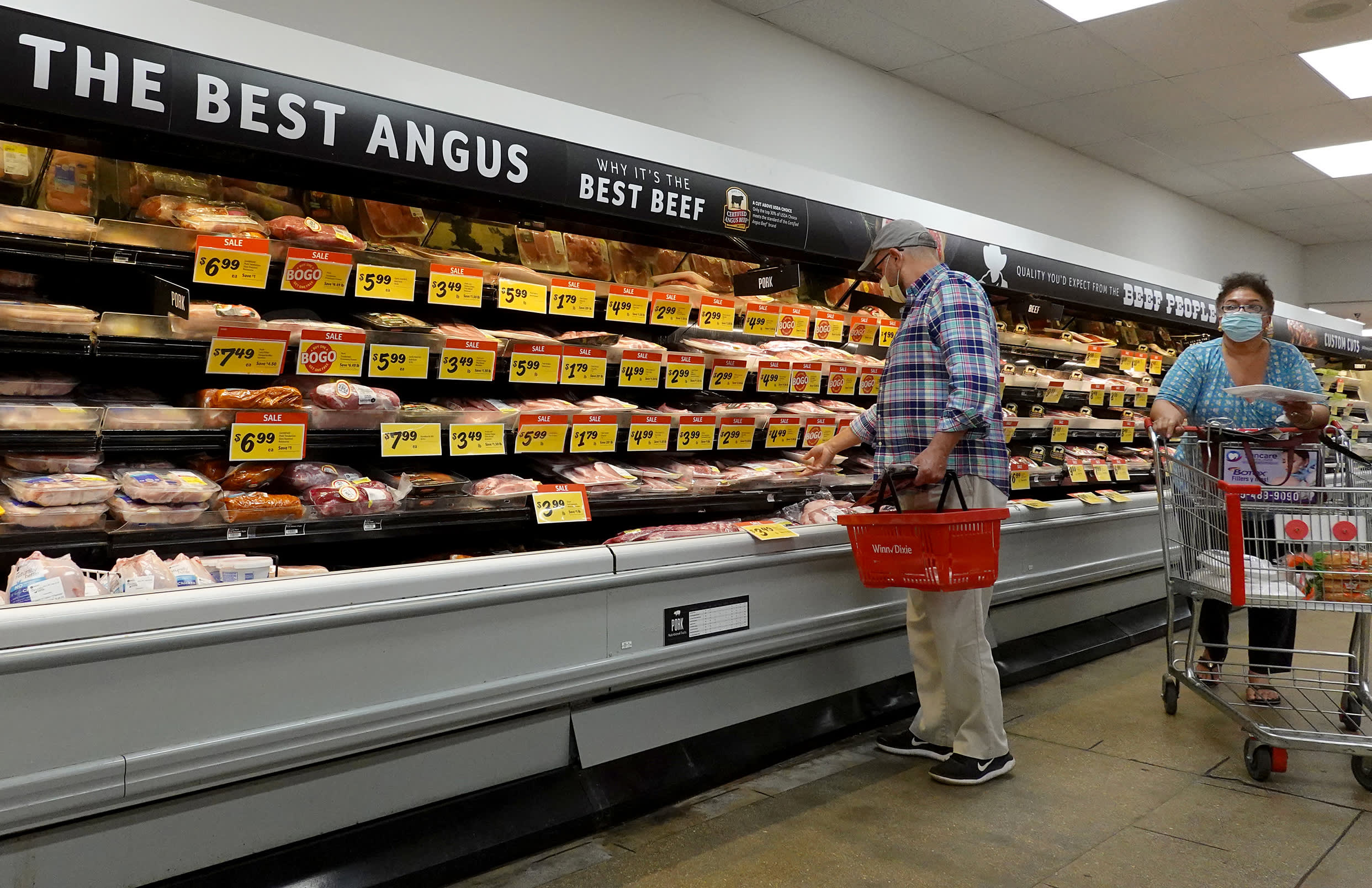
Customers shop at at a grocery store on February 10, 2022 in Miami, Florida. The Labor Department announced that consumer prices jumped 7.5% last month compared with 12 months earlier, the steepest year-over-year increase since February 1982.
Joe Raedle | Getty Images
Inflation grew worse in February amid the escalating crisis in Ukraine and price pressures that became more entrenched.
The consumer price index, which measures a wide-ranging basket of goods and services, increased 7.9% over the past 12 months, a fresh 40-year high for the closely followed gauge.
The February acceleration was the fastest pace since January1982, back when the U.S. economy confronted the twin threat of higher inflation and reduced economic growth.
On a month-over-month basis, the CPI gain was 0.8%. Economists surveyed by Dow Jones had expected headline inflation to increase 7.8% for the year and 0.7% for the month.
Food prices rose 1% and food at home jumped 1.4%, both the fastest monthly gains since April 2020, in the early days of the Covid-19 pandemic.
Energy also was at the forefront of ballooning prices, up 3.5% for February and accounting for about one-third of the headline gain. Shelter costs, which account for about one-third of the CPI weighting, accelerated another 0.5%, for a 12-month gain of 4.7%.
Excluding volatile food and energy prices, so-called core inflation rose 6.4%, in line with estimates and the highest since August 1982. On a monthly basis, core CPI was up 0.5, also consistent with Wall Street expectations.
The inflation surge is in keeping with price gains over the past year. Inflation has roared higher amid an unprecedented government spending blitz coupled with persistent supply-chain disruptions that have been unable to keep up with stimulus-fueled demand, particularly for goods over services.
Vehicle costs have been a powerful force, but showed signs of easing in February. Used car and truck prices actually declined 0.2%, their first negative showing since September, but are still up 41.2% over the past year. New car prices rise 0.3% for the month and 12.4% over the 12-month period.
A raging crisis in Europe has only fed into the price pressures, as sanctions against Russia have coincided with surging gasoline costs. Prices at the pump are up about 24% over just the past month and 53% in the past year, according to AAA.
Moreover, business are raising costs to keep up with the price of raw goods and increasing pay in a historically tight labor market in which there are about 4.8 million more job openings than there are available workers.
Recent surveys, including one this week from the National Federation for Independent Business, show a record level of smaller companies are raising prices to cope with surging costs.
To try to stem the trend, the Federal Reserve is expected next week to announce the first of a series of interest rate hikes aimed at slowing inflation. It will be the first time the central bank has raised rates in more than three years, and mark a reversal of a zero-interest-rate policy and unprecedented levels of cash injections for an economy that in 2021 grew at its fastest pace in 37 years.
However, inflation is not a U.S.-centric story.
Global prices are subject to many of the same factors hitting the domestic economy, and central banks are responding in kind. On Thursday, the European Central Bank said it was not moving its benchmark interest rate but would end its own asset purchase program sooner than planned.
This is breaking news. Please check back here for updates.



